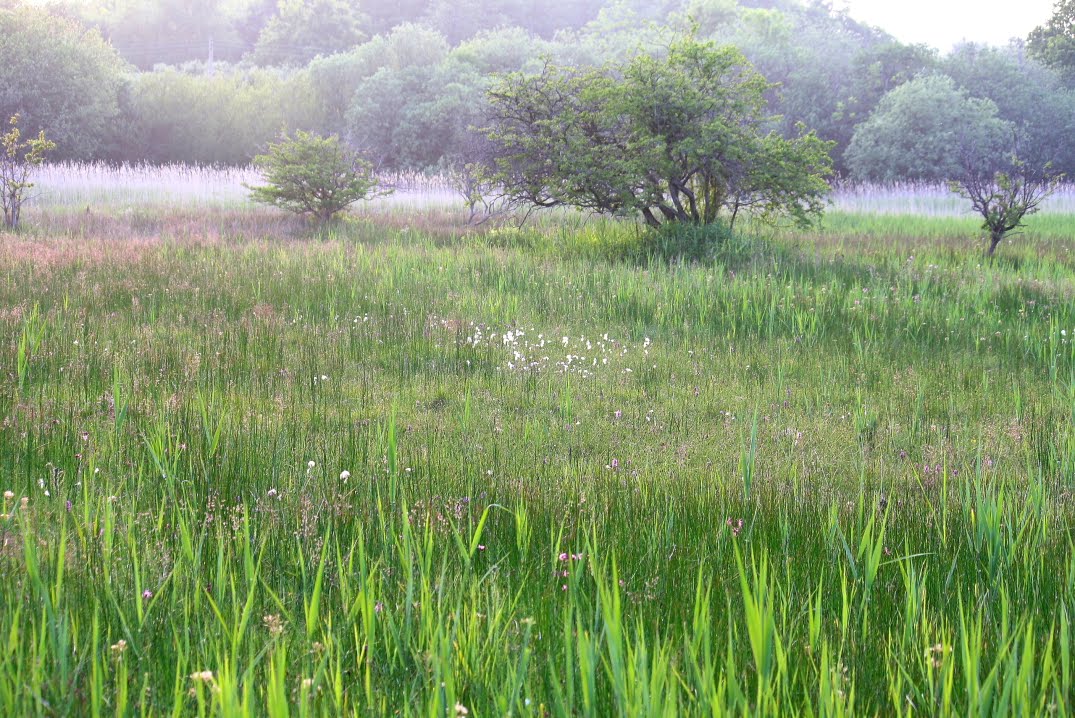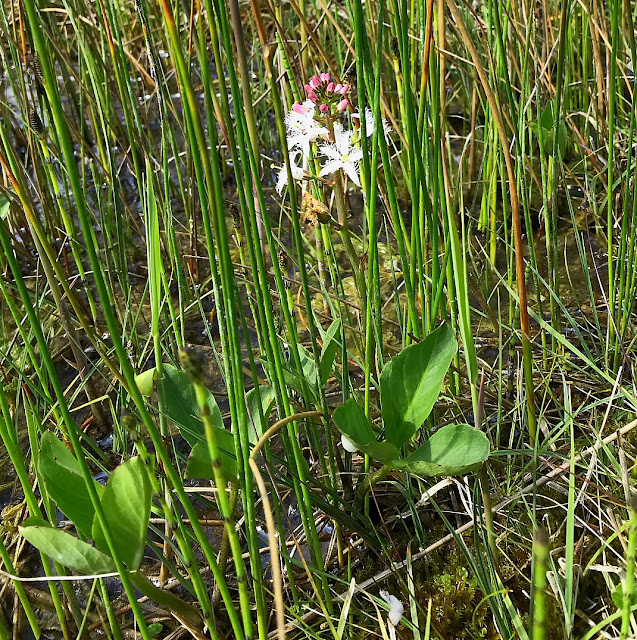Just like buses, this blog arrives in clusters. After a
break of months, last week we reported on the working party that pulled up
bag-loads of Himalayan Balsam and trimmed the boardwalk edges, and now,
already, we can report on a working party that pulled up bag-loads of Alder
seedlings, and trimmed the boardwalk edges.
Another sunny morning saw 13 volunteers arrive, some perhaps
whistling a merry tune with a spring in their step, such was the cheerful
nature of the day. Two of those, Carolyn and Mike, were with us for the first
time, so let’s hope they found it an enjoyable experience.
Of those intrepid 13, nine toiled in the noisome swamp intriguingly known as Area X, seeking to resist the inexorable March of the Alders by plucking out seedlings very close to the ground. Lacking only the iconic pointed hats, they compared themselves to working in a paddy field.
The medical benefit of good spinal flexion was perhaps offset by the inevitable backache induced, so other stretching exercises were necessary to relieve it. Bags were filled – a minimum of nine presumably, and tipped onto a new dumping site, to be covered with black plastic to prevent them re-sprouting.
Meanwhile four other doughty workers were busy completing the trimming of the boardwalk edges. Two brush cutter operators operated brush cutters, while two broom operators operated brooms. (Incidentally, why do you brush a boardwalk, or any other surface, but not broom it?)
It’s actually quite an achievement to complete this task in two sessions, and it represents a lot of hard physical effort.
Brushing (or brooming if you prefer) is also hard work, let me tell you. It’s no good just sweeping the cut stuff off to the side, it needs pushing together and hoiking off to a dump site so it can rot down in the time-honoured fashion. It’s a skill, no question. And it makes you hot.
Here is Team Leader Margaret’s message of thanks:
Thank
you so much to the thirteen volunteers who came this morning. Fortunately for
the alder pullers it was not so hot and a tremendous number of little seedlings
got extracted thanks to every bent back. It will save us so much work later.
I
think the brush cutters did not notice the cooler weather judging by the sweaty
brows. Well done chaps, it has made it much easier to traverse the boardwalk
and will be appreciated by all.
We
will be sending out the dates for the new cutting season very soon, as well as
opportunities to help make a wildflower meadow at the pit.
Thanks
again.
Margaret.
We work on the Common because we care about it as a special
place in our own back yard, and are grateful for the huge amount of support we
receive from the local community, as well as NWT, on whose behalf we do the
work. This was also the case from Southrepps Parish Council, the previous
owners of the land. It is perhaps inevitable that sometimes what we do is not
welcomed by everyone, but it should be stressed that we are helping to look
after a statutorily protected Site of Special Scientific Interest, and the way that
has to be done is laid down by Natural England, with the intention of providing
the best possible return for nature. As always with conservation work, some of
the benefits are quickly apparent, whilst others take years to be fully
realised: the beauty of this place is that the range of different habitats
provide both the annual joy of the revitalisation of familiar sections, as well
as the satisfaction of watching other areas gradually return from an
unsatisfactory condition of little value to wildlife, to one to be truly proud
of.
Duncan














